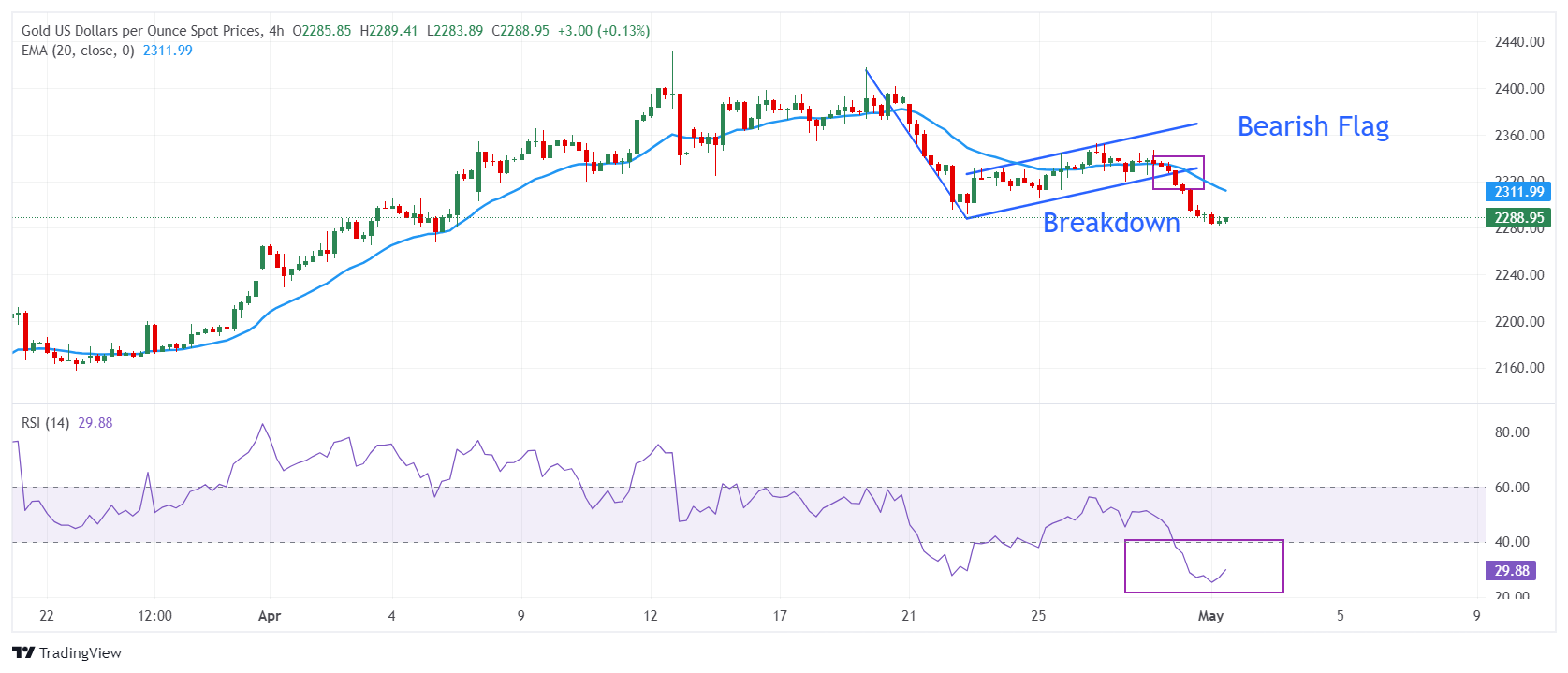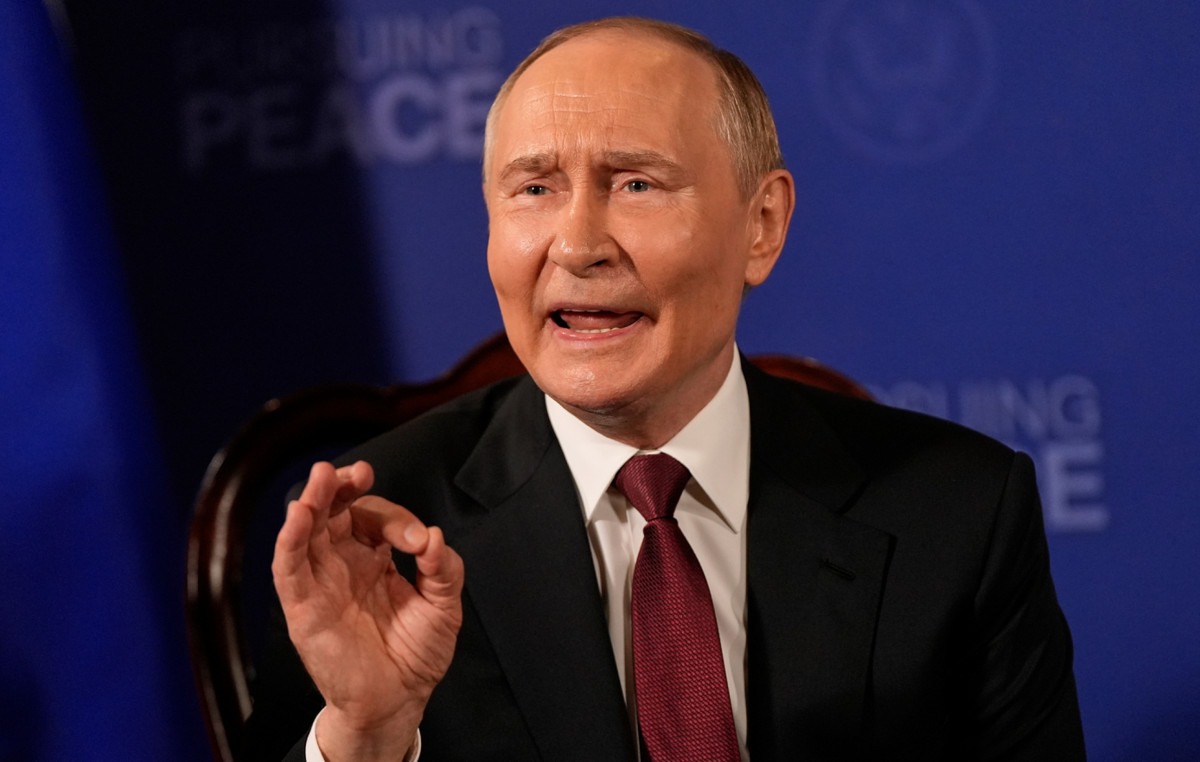- The price of Gold is below $2,300, while uncertainty over the Fed's monetary policy announcement keeps the US dollar and bond yields firm.
- The Fed is expected to support keeping interest rates at their current levels for longer.
- The strong first quarter labor cost index in the US adds to the evidence of the stubbornness of the inflation outlook.
The price of Gold (XAU/USD) bounces slightly to $2,300 in the early stages of the American session on Wednesday. The precious metal remains weak overall, as the US dollar and bond yields strengthen amid strong speculation that the Federal Reserve (Fed) will opt to maintain a restrictive interest rate environment for longer as Inflation remains persistently above expectations in the first quarter of the year.
In this context, the 10-year US Treasury yield rises to 4.69%. The US Dollar Index (DXY), which tracks the dollar against six major currencies and is negatively correlated with the price of Gold, jumps to a two-week high around 106.50. The US dollar remained lower last week, after weak first-quarter gross domestic product (GDP) growth raised concerns about the country's economic outlook. However, it rebounded strongly on Tuesday after the US Bureau of Economic Analysis (BEA) released strong first quarter employment cost index numbers.
Meanwhile, the appeal for the US Dollar has improved further as ADP's employment change figures for April have turned out to be surprisingly upbeat. The ADP agency reported that US private employers hired 192,000 people looking for work, up from the previous reading of 184,000. Investors were expecting a slight decline to 175,000.
Daily summary of market movements: The price of Gold reverses intraday losses despite the positive evolution of employment in the US
- Gold price finds support near the crucial support of $2,285. The short-term bias remains bearish on expectations that the Federal Reserve will maintain a hawkish interest rate stance at its policy meeting after keeping interest rates steady in the 5.25%-5.50% range for the sixth time. consecutive time.
- So far this year, inflation has exceeded forecasts, indicating that the disinflation process has stalled. This suggests that the Fed should keep interest rates high for longer, until policymakers are confident that price pressures will sustainably return to the desired 2% rate. On the other hand, the strength of the employment cost index in the US first quarter is another indication that price pressures remained upward in the January-March period. Overall, the index is boosted by a strong wage growth environment in which demand for labor remains strong, which increased 1.2% in the first quarter, against the consensus of 1.0% and the previous reading of 0.9 %.
- The prospect of interest rates continuing to rise bodes poorly for gold as it increases the opportunity cost of maintaining an investment in it. Meanwhile, investors are eager to know the rate cut timeline and the current status of the Fed's three rate cut projections, indicated by the March dot chart. CME's FedWatch tool shows that traders believe the Fed will begin cutting interest rates starting with the September meeting.
- In Wednesday's session, investors will also focus on April ISM Manufacturing PMI data, which will be released early in the New York session, ahead of the Fed's interest rate decision. The manufacturing PMI is estimated to have fallen to 50.0 from 50.3 in March.
- From the manufacturing PMI report, investors will especially focus on the new orders subcomponent. S&P Global's preliminary PMI survey for April reported that production growth cooled in line with weak demand, as new orders declined for the first time in six months, although only modestly. The drop in new orders was noted by both manufacturers and service providers. Encouraging employment and factory activity figures would improve the US economic outlook, while weak figures would heighten concerns about a slowdown.
Technical analysis: The price of Gold is trading near $2,300

Gold posted heavy losses after a breakout of the bearish pennant formation on the four-hour time frame. The bearish pennant formation demonstrates a consolidation move after a strong correction, usually following the ongoing trend. The short-term outlook is bearish, as the price of Gold is trading below the 20-period EMA, which is at $2,312.
On the downside, the March 23 high at $2,223 will be the main support for the price of Gold. The 14-period RSI is oscillating in the bearish range of 20.00-40.00, suggesting that momentum has shifted towards the bears. .
Frequently asked questions about Gold
Why invest in Gold?
Gold has played a fundamental role in human history, as it has been widely used as a store of value and medium of exchange. Today, apart from its brilliance and use for jewelry, the precious metal is considered a safe haven asset, meaning it is considered a good investment in turbulent times. Gold is also considered a hedge against inflation and currency depreciation, since it does not depend on any specific issuer or government.
Who buys more Gold?
Central banks are the largest holders of Gold. In their aim to support their currencies in turbulent times, central banks tend to diversify their reserves and purchase Gold to improve the perception of strength of the economy and currency. High Gold reserves can be a source of confidence for the solvency of a country. Central banks added 1,136 tons of gold worth about $70 billion to their reserves in 2022, according to data from the World Gold Council. This is the largest annual purchase since records exist. Central banks in emerging economies such as China, India and Türkiye are rapidly increasing their gold reserves.
What correlation does Gold have with other assets?
Gold has an inverse correlation with the US Dollar and US Treasuries, which are the main reserve and safe haven assets. When the Dollar depreciates, the price of Gold tends to rise, allowing investors and central banks to diversify their assets in turbulent times. Gold is also inversely correlated with risk assets. A rally in the stock market tends to weaken the price of Gold, while sell-offs in riskier markets tend to favor the precious metal.
What does the price of Gold depend on?
The price of Gold can move due to a wide range of factors. Geopolitical instability or fear of a deep recession can cause the price of Gold to rise rapidly due to its status as a safe haven asset. As a non-yielding asset, the price of Gold tends to rise when interest rates fall, while rising money prices tend to weigh down the yellow metal. Still, most of the moves depend on how the US Dollar (USD) performs, as the asset is traded in dollars (XAU/USD). A strong Dollar tends to keep the price of Gold in check, while a weaker Dollar is likely to push up Gold prices.
Source: Fx Street
I am Joshua Winder, a senior-level journalist and editor at World Stock Market. I specialize in covering news related to the stock market and economic trends. With more than 8 years of experience in this field, I have become an expert in financial reporting.







